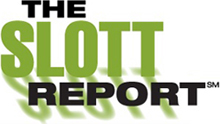“Learn from the mistakes of others. You can’t live long enough to make them all yourself.”
- Eleanor Roosevelt
 We like to paraphrase this quote. Learn from the mistakes of others. It’s cheaper that way. Here's what I mean.
We like to paraphrase this quote. Learn from the mistakes of others. It’s cheaper that way. Here's what I mean.
This week there were five private letter rulings (PLRs) issued by IRS that dealt with IRA issues. Don’t let these problems happen to you or to your clients.
The first one dealt with the distribution of plan assets from a bankrupt company. The employee provided information for a direct transfer of the plan assets to another plan. The custodian could not reach any of the contacts listed so they issued a check to the plan participant - minus the 20% mandatory tax withholding. The participant did not receive the check. He did not discover anything was wrong until he received IRS Form 1099-R for the distribution. Moral of the story - always, Always, ALWAYS follow up on your transfers. His failure to follow up caused the loss of 20% of his retirement account (i.e., the amount of income tax that was sent to IRS). He will get any overpayment of taxes back when he files his tax return, but he cannot put the funds back in his plan (he did not ask IRS to allow him to do this).
Another PLR dealt with a very common problem. The wrong box got checked. The IRA funds went into a non-qualified account. This was a direct transfer. The account owner did not get a 1099-R for the distribution. But, he got a love letter from IRS asking for tax on the amount of the distribution. Moral of the story - again - always, Always, ALWAYS follow up on your transfers. Also make sure you follow up on rollovers. This mistake happens all too frequently with rollovers as well.
The next PLR dealt with another direct transfer for a new investment. The account owner thought the new custodian could hold IRA funds. Custodian 1 did not follow their own internal procedures and Custodian 2 was not an IRA custodian. No 1099-R was issued since this was a “direct transfer.” The account owner discovered the problem when he inquired about his required distribution for the year.
Another PLR was also for a new investment. The account owner was assured that the new investment could be done with IRA funds. This one was done as a 60-day rollover so the 1099-R did not alarm the account owner. Her clue came when she got a K-1 from the new investment that did not indicate that her shares were being held in the name of her IRA. Moral for these two mistakes - ask for a beneficiary form. If you are opening a new IRA investment, you should have an IRA agreement AND a beneficiary form. If they can’t give you a beneficiary form, then you do not have an IRA account. It’s as simple as that.
This last one is a common required minimum distribution (RMD) error. The individual had three retirement accounts, an employer plan, a SEP IRA, and a traditional IRA. His tax advisor told him to calculate the RMDs separately and that he could then take the balance from any one of his accounts. He elected to take the distribution from his SEP IRA. The problem - you cannot take an RMD for one type of account from a different type of account. Your IRA distribution cannot come from an employer plan and vice versa (SEP and SIMPLE accounts are considered IRA accounts for RMD purposes). Therefore, he had not taken an RMD from his employer plan for the year. Unfortunately, there is nothing good we can learn from this. Even a trusted advisor may not know all the RMD rules.
These mistakes cost the account owners anywhere from $3,000 to $10,000 in IRS fees alone for filing a PLR request. You also have to pay a professional to prepare the PLR request. Hopefully you can learn from these mistakes of others and avoid them. It’s cheaper that way.
- By Beverly DeVeny and Jared Trexler









1 comments:
Great job Ed! Thanks for the updates. Always better to learn first than to have clients make these kinds of mistakes.
April Caudill
Post a Comment